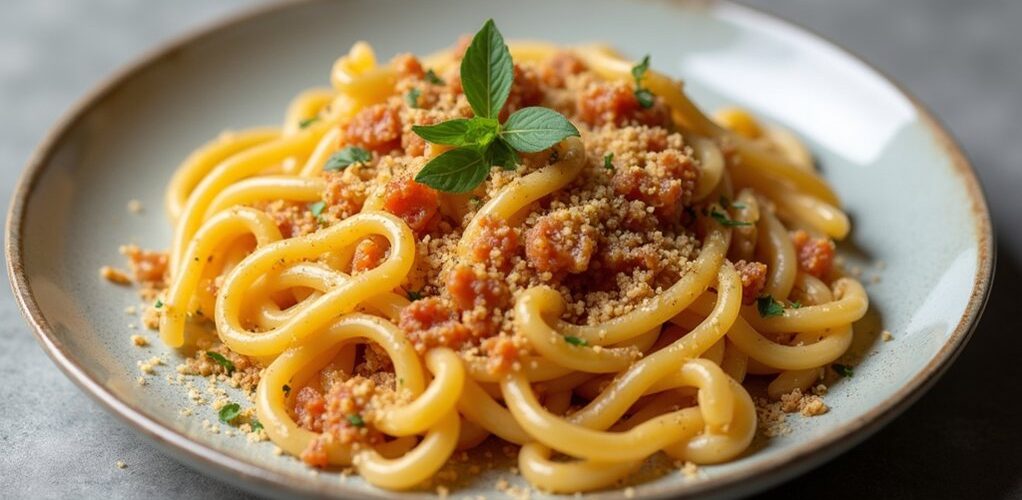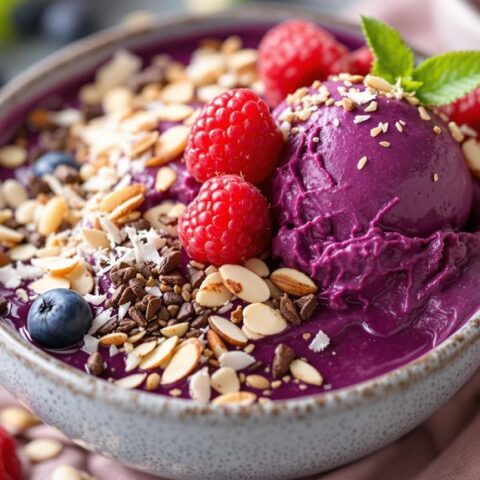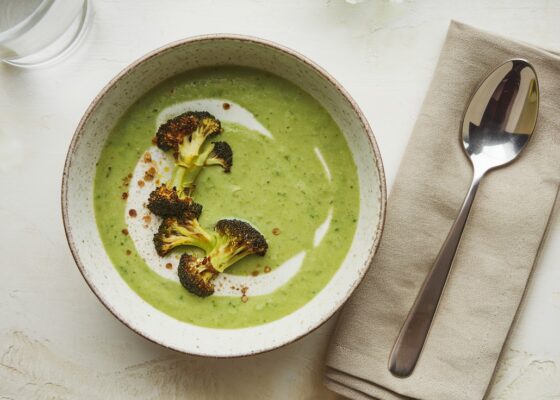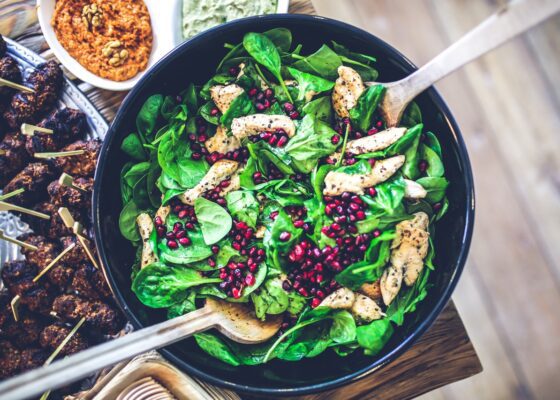
Protein pasta serves as an innovative low-carb alternative to traditional pasta, containing only 6-20 grams of net carbs per serving compared to regular pasta's 40-45 grams. Most varieties offer enhanced protein content, ranging from 14-24 grams per serving, while incorporating nutrient-rich ingredients like chickpeas, lentils, or yellow peas. These alternatives provide superior fiber content and essential micronutrients, making them suitable for various dietary needs. Understanding the specific nutritional profiles of different protein pasta options can help maximize their benefits in a healthy diet.
Key Takeaways
- Protein pasta significantly reduces carbohydrates to 6-20 grams per serving, compared to traditional pasta's 40-45 grams of carbs.
- Kaizen Low Carb Keto Pasta exemplifies innovative protein pasta options, offering 20 grams of protein with only 6 net carbs.
- Popular brands like ZENB, Chickapea, and ThinSlim Foods provide low-carb alternatives while maintaining familiar pasta textures and flavors.
- Chickpea-based protein pasta delivers 20 grams of protein and just 6-7 grams of net carbs per serving.
- Not all protein pasta is low-carb; carbohydrate content varies by ingredient, so checking nutrition labels is essential.
Understanding Protein Pasta and Its Carb Content
Protein pasta represents a revolutionary alternative to traditional pasta, offering a significant reduction in carbohydrates while maintaining the familiar texture and versatility that pasta lovers enjoy.
When comparing protein pasta to traditional pasta varieties, the nutritional differences are substantial. While conventional pasta typically contains 40-45 grams of carbohydrates per serving, high protein alternatives can reduce this to as little as 6-20 grams.
Products like Kaizen Low Carb Keto Pasta Fusilli demonstrate this remarkable difference, providing 20 grams of protein with only 6 net carbs per 2-ounce portion. This significant reduction in carbohydrates is achieved through innovative ingredients such as lupini flour and fava bean protein, which contribute to creating a low-carb profile while maintaining satisfying protein content.
The Science Behind Low-Carb Protein Pasta
The transformation of traditional pasta into a low-carb alternative involves intricate biochemical processes that optimize protein content while minimizing carbohydrates. Manufacturers achieve this by replacing wheat flour with protein-rich ingredients like lupini flour and pea protein, which fundamentally alter the pasta's nutritional composition.
The science behind low-carb protein pasta relies on utilizing ingredients that naturally contain higher protein content and fiber while maintaining lower carbohydrate levels. For example, chickpea pasta provides up to 20 grams of protein per serving while keeping net carbs at 6-7 grams. The increased fiber content, typically 6-8 grams per serving, works synergistically with the enhanced protein levels to create a pasta alternative that supports muscle maintenance and promotes satiety, making it an effective option for those following carbohydrate-restricted diets. A notable example of high-protein pasta is edamame pasta, which offers 24g of protein and 14g of dietary fiber per serving, ideal for low-carb diets.
Key Nutritional Benefits of Protein-Based Pasta
Protein-based pasta offers a compelling nutritional advantage with its markedly higher protein content of 14 grams per serving compared to traditional pasta's 7 grams, while maintaining substantially lower carbohydrate levels at just 6 net carbs per serving.
The nutrient density of protein pasta extends beyond its macronutrient profile, incorporating essential micronutrients such as iron, magnesium, and B vitamins, particularly in varieties made from edamame and chickpeas.
The high fiber content in protein pasta serves multiple nutritional purposes, supporting digestive health while creating a satisfying feeling of fullness that can aid in portion control and weight management.
Protein vs. Carb Content
When comparing nutritional profiles between traditional and protein-based pasta varieties, significant differences emerge in both macronutrient content and overall dietary benefits. Protein pasta consistently delivers higher amounts of protein per serving while remaining lower in carbs than conventional options. For instance, chickpea and lentil-based varieties provide up to 20 grams of protein while maintaining reduced carbohydrate content.
| Pasta Type | Calories | Protein (g) | Fiber (g) | Net Carbs (g) |
|---|---|---|---|---|
| Traditional | 200 | 7 | 3 | 40 |
| Chickpea | 190 | 14 | 8 | 32 |
| Lentil | 180 | 18 | 7 | 30 |
| Edamame | 185 | 20 | 9 | 28 |
| Keto | 170 | 20 | 12 | 6 |
Dense Nutrient Profile Comparison
Beyond their reduced carbohydrate content, protein-based pasta alternatives offer a substantially richer nutrient profile compared to conventional wheat pasta options.
These innovative products feature high fiber content, reaching up to 8 grams per serving, while delivering significant amounts of plant-based protein ranging from 14 to 20 grams per portion.
The incorporation of ingredients like lupini, fava beans, chickpeas, and lentils contributes to a more thorough nutritional package.
These plant-based protein sources provide essential micronutrients, including iron, magnesium, and B vitamins, supporting overall health and bodily functions.
Leading brands demonstrate this nutritional superiority, with products like Banza containing double the protein and quadruple the fiber of traditional pasta varieties, making them excellent choices for those seeking enhanced nutritional value in their meals.
Fiber-Rich Alternative Benefits
Three key nutritional advantages emerge from fiber-rich protein pasta alternatives, making them increasingly popular among health-conscious consumers.
These innovative protein sources deliver substantial benefits while being lower in carbohydrates than traditional pasta options. The high in fiber content, typically around 8 grams per serving, supports digestive health and helps keep you full for longer periods, contributing to better appetite control and weight management.
Additionally, these alternatives provide enhanced blood sugar regulation through their fiber content, while delivering essential micronutrients like iron, magnesium, and B vitamins.
The combination of reduced carbohydrates and increased protein content makes these pasta alternatives particularly beneficial for active individuals seeking to maintain muscle health while managing their carbohydrate intake.
Popular Types of Low-Carb Protein Pasta
As health-conscious consumers seek alternatives to traditional pasta, the market has responded with innovative low-carb protein pasta options that deliver both nutrition and satisfaction.
Popular varieties include ZENB Yellow Pea Pasta, offering substantial protein with minimal carbs, and Chickapea's lentil pasta, which provides exceptional nutritional value through high protein content and dietary fiber.
Alternative pasta options like ZENB and Chickapea deliver high protein and fiber while keeping carbs low, revolutionizing healthy pasta choices.
These alternatives represent a significant evolution in pasta products, meeting diverse dietary needs while maintaining familiar textures and tastes.
- ThinSlim Foods Impastable features an impressive 26g of fiber per serving, making it an excellent choice for satiety.
- Barilla Chickpea Rotini delivers 8g of fiber with fewer carbs than traditional pasta.
- Cappellos Almond Flour Spaghetti offers a grain-free option for those following specialized diets.
- ZENB Yellow Pea Pasta combines 12g of protein with 7g of fiber in each serving.
Comparing Regular Pasta vs. Protein Pasta
The stark contrast between regular and protein pasta becomes evident when examining their carbohydrate content, with traditional pasta containing 40-45 grams per serving compared to protein pasta's remarkably lower 6-30 grams of net carbs.
Beyond carbohydrate differences, protein pasta demonstrates superior nutritional value through its enhanced protein content, offering 12-20 grams per serving versus regular pasta's modest 7-9 grams.
The nutritional advantages of protein pasta extend to its fiber content and diverse ingredient profile, utilizing nutrient-rich alternatives like chickpeas and lentils instead of refined wheat.
Carb Content Face-Off
When comparing regular pasta to protein-based alternatives, the differences in carbohydrate content reveal striking nutritional contrasts.
Traditional pasta contains 40-45 grams of carbs per serving, while innovative low-carb pasta options demonstrate considerably reduced net carbs. Products like Kaizen Low Carb Keto Pasta contain just 6 net carbs, while ThinSlim Foods Impastable offers only 5 net carbs per serving, making them suitable alternatives for carb-conscious consumers.
- Regular pasta averages 40-45g carbs with minimal protein content
- Banza chickpea pasta reduces carbs to 30g while boosting protein to 14g
- ThinSlim Foods Impastable provides 26g fiber with only 5 net carbs
- ZENB Yellow Pea Pasta balances 36g carbs with 12g protein and 7g fiber
Nutritional Value Showdown
Modern protein pasta options demonstrate substantial nutritional advantages over traditional wheat-based varieties, particularly in their macronutrient composition and overall health benefits. When comparing regular pasta to protein-enriched alternatives, such as lentil-based options, the differences become clear in their fiber content, protein levels, and low carb profile.
| Nutrient | Regular Pasta | Protein Pasta |
|---|---|---|
| Calories | 200 | 190 |
| Protein | 7g | 14-20g |
| Fiber | 3g | 8-26g |
| Net Carbs | 40-45g | 6-36g |
| Amino Acids | Incomplete | Complete |
These nutritional improvements make protein pasta an excellent choice for those seeking better macronutrient balance while maintaining the familiar pasta experience. The increased fiber content aids digestion, while higher protein levels support muscle maintenance and satiety.
Health Advantages of Choosing Protein Pasta
Making a switch to protein pasta offers numerous health benefits that extend far beyond traditional pasta options. The low carb content makes it an excellent choice for those managing their carbohydrate intake, while the high protein composition supports muscle maintenance and promotes satiety.
Protein pasta revolutionizes healthy eating by combining low-carb benefits with muscle-supporting protein, making every meal more nutritionally complete.
The substantial fiber content aids digestive health and helps regulate blood sugar levels, making it particularly beneficial for metabolic wellness.
- Supports weight management through increased satiety and reduced caloric intake
- Provides essential nutrients for muscle repair and growth
- Helps maintain stable blood sugar levels through slower digestion
- Accommodates dietary restrictions while delivering complete nutrition
These advantages make protein pasta a nutritionally superior alternative that aligns with various dietary goals and health requirements, from athletic performance to digestive wellness.
Best Cooking Methods for Protein Pasta
To maximize the health benefits of protein pasta, proper cooking techniques play a fundamental role in achieving peak texture and flavor. The best cooking methods begin with boiling a large pot of salted water, followed by careful monitoring of cooking times, which typically range from 4 to 8 minutes depending on the variety.
When preparing protein pasta, stirring occasionally prevents sticking, while normal foaming during cooking should not cause concern.
The pasta's flavor profile can be enhanced through various preparation techniques, including traditional boiling, baking, or sautéing. For best results, strain the pasta once it reaches desired firmness, and consider a quick cold water rinse if serving later.
Pairing with complementary sauces, such as pesto for chickpea variants or creamy sauces for lentil-based options, raises the final dish.
Ideal Sauce Pairings for Low-Carb Pasta
While selecting the perfect sauce for low-carb pasta requires careful consideration, several delicious options can enhance both flavor and nutritional content without compromising dietary goals. High-protein sauces made from ground turkey or chicken provide essential nutrients, while tomato-based sauces rich in vegetables offer versatility and nutritional benefits. For those following strict low-carb diets, creamy alternatives like Alfredo or pesto complement chickpea or lentil pasta varieties particularly well. Combine ground turkey with marinara sauce for a protein-rich, low-carb option. Add sautéed vegetables to creamy Alfredo sauce for enhanced nutrition. Mix classic pesto with roasted vegetables for a Mediterranean-inspired dish. Create vegetable-rich tomato sauces with minimal added sugars for peak flavor. For a protein boost, consider using grass-fed beef in your sauces, which is rich in omega-3s and CLA, providing additional health benefits.
Meal Planning With Protein Pasta
Successful meal planning with protein pasta requires a strategic approach that balances nutritional goals with variety and taste preferences. When incorporating protein pasta into low-carb meal plans, individuals can benefit from its impressive nutritional profile, typically containing around 20 grams of protein per serving while maintaining minimal carbohydrate content. To maximize the effectiveness of meal planning with protein pasta, consider creating diverse dishes that combine this versatile ingredient with nutrient-rich components. Pairing protein pasta with high-fiber vegetables and lean proteins not only enhances the overall nutritional value but also helps maintain satiety. For a well-rounded meal, include healthy oils like olive oil to further boost heart health and inflammation reduction. The flexibility of protein pasta allows for various preparation methods, from cold salads to heated casseroles, making it an adaptable option for weekly meal preparation while adhering to low-carb dietary requirements.
Storage and Shelf Life Guidelines
Proper storage techniques play an essential role in maintaining the quality and nutritional benefits of protein pasta, with airtight containers in cool, dry locations offering ideal preservation conditions.
Different varieties of protein pasta, particularly those made from legumes and alternative ingredients, may have varying shelf lives ranging from one to two years when properly stored.
While sealed packages can maintain freshness until their expiration date, opened protein pasta should be consumed within a few months to guarantee the best taste and texture.
Proper Storage Methods
Maintaining the quality and longevity of protein pasta requires specific storage techniques that differ for both uncooked and cooked varieties.
Uncooked protein pasta should be kept in a cool, dry place, ideally in an airtight container once opened, and can last up to 1-2 years when properly stored. Always check the expiration date on the package for specific guidance on shelf life.
- Store uncooked protein pasta in a cool, dry pantry away from direct sunlight
- Transfer opened packages to airtight containers to prevent moisture exposure
Refrigerate cooked protein pasta in sealed containers for 3-5 days maximum.
For extended storage, freeze cooked protein pasta in airtight containers for up to 2 months.
Maximizing Pasta Freshness
Fresh protein pasta's longevity depends on strategic storage practices that protect its nutritional value and texture quality. To maintain ideal pasta freshness, store uncooked products in cool, dry locations away from direct sunlight, preferably in airtight containers that prevent moisture absorption.
Monitor the expiration date carefully, as unopened packages typically last 1-2 years.
For cooked protein pasta, refrigeration in sealed containers extends shelf life to 3-5 days, while freezing can preserve it for up to 2 months. To freeze effectively, arrange cooked pasta in a single layer on a baking sheet before transferring to freezer-safe bags.
Food safety remains paramount – always discard pasta that shows signs of spoilage, such as unusual odors, discoloration, or mold growth.
Common Misconceptions About Protein Pasta
Many consumers mistakenly assume that all protein pasta products are automatically low in carbohydrates, yet this widespread belief overlooks essential nutritional distinctions.
While protein pastas often contain more protein than traditional options, their carb content varies greatly based on ingredients. For instance, chickpea pasta contains around 30 carbs per serving, which may not align with low-carb dietary goals. It's important to note that certain starchy vegetables like potatoes and corn should be avoided on a keto diet due to their high carb content.
- Not all high protein pasta varieties are formulated specifically for low-carb diets
- Different protein sources result in varying carbohydrate levels
- Some brands focus exclusively on protein content without reducing carbs
- Specialty products like lupini flour pasta offer genuinely low-carb options at 6 net carbs per serving
Careful label reading remains vital for consumers seeking true low-carb alternatives, as protein content alone doesn't guarantee reduced carbohydrates.
Tips for Incorporating Protein Pasta Into Your Diet
Successfully integrating protein pasta into a low-carb diet requires thoughtful meal planning and preparation techniques to maximize its nutritional benefits.
When creating pasta recipes, combine protein pasta with nutrient-dense ingredients like fresh vegetables, lean meats, and healthy fats to enhance both flavor and satiety. The nutty taste of alternatives such as chickpea or lentil pasta pairs well with various sauces and seasonings.
To maintain the high protein and low carb benefits, incorporate protein pasta into weekly meal prep through versatile dishes like cold pasta salads or baked casseroles.
Pay careful attention to cooking times, as these alternatives often require less boiling time than traditional pasta. Experimenting with different varieties, such as edamame or quinoa-based options, can help identify preferred textures and flavors while maintaining nutritional goals.
Frequently Asked Questions
Is Protein Pasta Low in Carbs?
Protein pasta varieties offer lower carb content compared to traditional pasta, with some options containing as few as 6 grams per serving. Higher protein content and nutritional benefits make them suitable alternatives.
Is Protein Pasta Actually Healthy?
Protein pasta's healthiness depends on ingredient analysis and dietary considerations. Its nutritional benefits include higher protein content, more fiber, and essential nutrients, while proper cooking methods maintain these advantages.
What Is the Lawsuit for Low-Carb Pasta?
The low-carb pasta lawsuit centers on consumer claims challenging marketing practices and nutritional labeling accuracy, alleging companies misrepresented carbohydrate content, leading to legal action over false advertising and misleading product information.
What Is the Best Pasta to Eat on a Low-Carb Diet?
Protein-based pasta substitutes like ThinSlim Foods Impastable and ZENB Yellow Pea Pasta offer excellent low-carb alternatives, providing high fiber content and favorable nutrition facts while accommodating various dietary preferences.
Conclusion
Protein pasta offers a practical alternative for those seeking to reduce carbohydrate intake while maintaining pasta in their diet. While not strictly low-carb, these innovative products provide enhanced protein content and better nutritional balance compared to traditional pasta. By understanding the various options available and implementing smart portion control, consumers can enjoy this versatile food while working toward their health and dietary goals.









No Comments